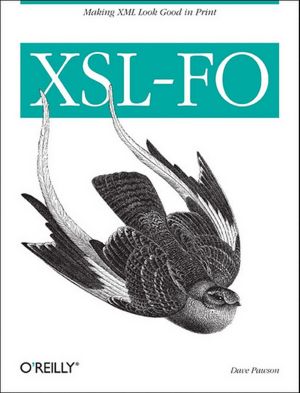Xsl-Fo: Making XML Look Good in Print book
Par smith deidra le vendredi, février 17 2017, 22:01 - Lien permanent
Xsl-Fo: Making XML Look Good in Print by Dave Pawson


Xsl-Fo: Making XML Look Good in Print Dave Pawson ebook
ISBN: 9780596003555
Format: pdf
Publisher: O'Reilly Media, Incorporated
Page: 284
While historically, it's been difficult at best to create print-quality PDF books from markup alone, CSS3 now brings us the Paged Media Module, which targets print book formatting. That's reuse in one sense, but is an open-source example. (There are better ways to do this in XSL using the last() XPath function). XSL - Dynamically enter blank lines in XHTML. (XPath is also used by the XML Linking specification); XSL-FO 1.0 – Extensible Stylesheet Language Formatting Objects, an XML vocabulary for specifying formatting semantics. It's a good way to experiment and evaluate the workflow.). Although XSL-FO would probably be the best for print… maybe you can experiment a bit with the print-formatting options in CSS. Reply I'll look into giving a DIV a set height. All this really means is that it makes use of a specific XML format called XSL-FO, which is built to represent printed page layout. Other than that I could only imagine to giving divs the height you want for a quick trial. It claims to be “driven by XSL formatting objects (XSL-FO)”. Moving on to a different level of sophistication brings in standards like DocBook, which have pre-written XSLT's which allow a single XML file to create HTML (of various layouts), Javahelp, XSL-FO (for processing into print), ePub and others. XSL transformations are usually a one-to-one transformation, Your first XSL will look something like this:
Download Xsl-Fo: Making XML Look Good in Print for mac, android, reader for free
Buy and read online Xsl-Fo: Making XML Look Good in Print book
Xsl-Fo: Making XML Look Good in Print ebook zip pdf rar mobi epub djvu